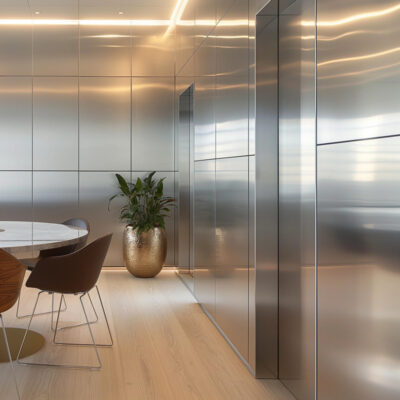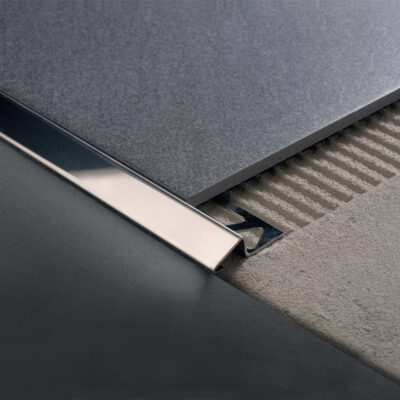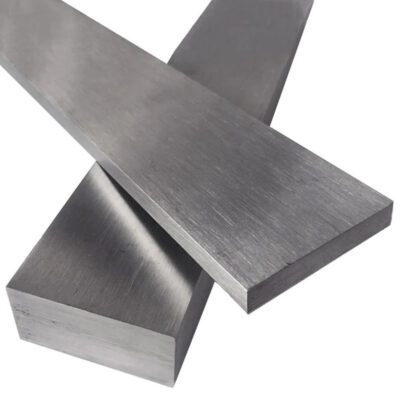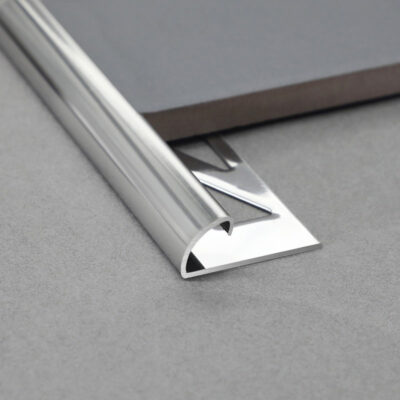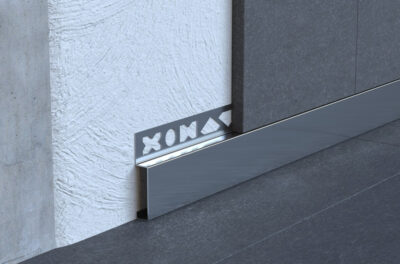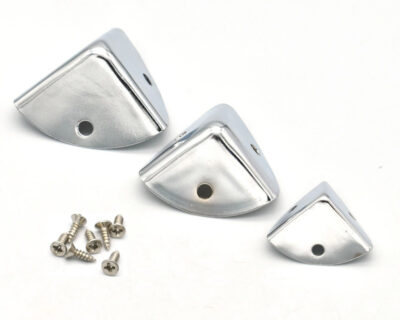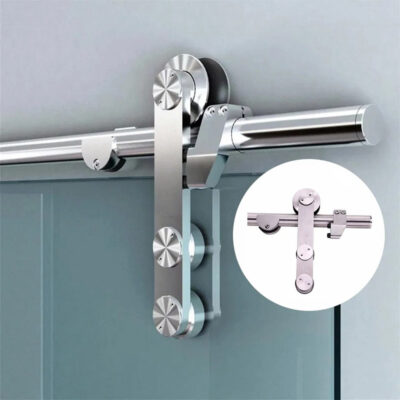The Evolution and Importance of Skirting Systems in Modern Architecture
Walking through any contemporary commercial building, I’m often struck by how the smallest details can transform a space. The junction where walls meet floors—historically an afterthought—has become a critical design element. Stainless steel skirting systems represent perhaps the most significant evolution in this aspect of architectural detailing in decades.
Skirting boards (or baseboards in North American terminology) trace their origins back to practical necessity. In the 17th and 18th centuries, these wooden fixtures primarily served to hide unsightly gaps between walls and uneven floorboards while protecting plaster walls from damage. They were functional elements first, decorative second. Victorian-era homes elevated skirting to an art form with elaborate moldings and substantial heights of up to 12 inches, signaling wealth and status.
The modernist movement of the early 20th century, with its emphasis on clean lines and truth to materials, began challenging these ornate traditions. Architects like Mies van der Rohe and Le Corbusier sought to minimize transitional elements in their pursuit of visual simplicity. Yet the practical need for skirting remained unresolved until advances in manufacturing made metal skirting systems commercially viable.
Stainless steel entered the architectural conversation in earnest during the mid-20th century. Its initial applications were primarily industrial and commercial before expanding into high-end residential spaces. The material’s inherent properties—durability, cleanability, and sleek appearance—made it particularly suitable for skirting applications in premium environments.
“The shift toward stainless steel in transitional elements like skirting represents a broader architectural movement toward honesty in materials,” notes architectural historian Dr. Elaine Winters. “Rather than disguising functional elements, contemporary design celebrates them.”
A watershed moment came in the healthcare sector during the 1990s when evidence-based design research highlighted the importance of creating environments that facilitated cleaning and prevented bacterial harbourage. Stainless steel skirting systems, with their non-porous surfaces and potential for seamless integration, became standard in hospitals and cleanrooms.
Beyond practical considerations, these systems have become signature elements in premium commercial spaces. The subtle reflection of light, the precision of manufactured edges, and the unmistakable premium feel of stainless steel communicate quality in ways that traditional materials cannot match.
In speaking with E-Sang representatives during a recent trade show, I gained insight into how manufacturers have responded to this evolution. “We’ve witnessed a fundamental shift in how architects specify transitional elements,” their design consultant explained. “What was once viewed as merely functional is now integral to the design statement.”
This shift reflects broader changes in architectural thinking—the growing recognition that every element within a building deserves thoughtful consideration and that materials should be selected not just for their visual appeal but for their performance over time.
Technical Specifications and Properties of Stainless Steel Skirting
The exceptional performance of stainless steel skirting systems stems from their material composition and manufacturing processes. Understanding these technical aspects is essential for anyone considering their application in a project.
Stainless steel used in architectural applications typically falls into two grades: 304 and 316. Grade 304, containing approximately 18% chromium and 8% nickel, offers excellent corrosion resistance in standard indoor environments. Grade 316 adds molybdenum to the alloy, enhancing resistance to chlorides and making it suitable for coastal locations or spaces with regular exposure to chemicals. The selection between these grades depends on the specific environmental challenges the skirting will face.
The thickness of the material (gauge) typically ranges from 0.8mm to 2.0mm, with commercial applications generally favoring the heavier gauges for durability in high-traffic areas. This substantial material thickness contributes to the significant weight difference between stainless steel and alternative skirting materials—a factor that influences both installation methods and structural considerations.
Looking beyond the base material, the manufacturing process significantly affects performance. Precision engineering using computer-controlled cutting and forming equipment ensures consistent dimensions—critical when creating systems that must align perfectly along extended wall runs. Advanced welding techniques, often utilizing laser technology, create joins that are nearly invisible, preserving the clean aesthetic that makes stainless steel skirting so appealing.
A project manager for a recent hospital renovation shared this insight: “We specified 316 grade for all wet areas and 304 for general corridors. The difference in cost was justified by the specific performance requirements. Five years later, both are performing exceptionally, with no visible distinction between them.”
The dimensional versatility of stainless steel skirting deserves particular attention. Standard heights range from 60mm to 150mm, though custom heights can be manufactured for specific project requirements. Profile depths typically vary from 10mm to 25mm, with the selection often influenced by practical considerations such as accommodating floor irregularities or housing service runs.
| Grade | Composition | Best For | Relative Cost |
|---|---|---|---|
| 304 | 18% Chromium, 8% Nickel | Standard indoor environments, general commercial and residential applications | Baseline |
| 316 | 16-18% Chromium, 10-14% Nickel, 2-3% Molybdenum | Coastal locations, healthcare, food processing, areas exposed to chemicals | 20-30% premium over 304 |
The technical properties that make stainless steel particularly suitable for skirting applications include:
Corrosion Resistance: The chromium content creates a self-healing passive layer of chromium oxide when exposed to oxygen, preventing rust and corrosion.
Fire Resistance: Unlike wood or vinyl alternatives, stainless steel is non-combustible and doesn’t emit toxic fumes when exposed to heat.
Impact Resistance: The material can withstand significant impacts without denting or deforming, particularly in heavier gauges.
Thermal Stability: Minimal expansion or contraction with temperature changes, reducing the risk of gaps forming over time.
Electromagnetic Shielding: In specialized applications like data centers or medical imaging facilities, stainless steel skirting can contribute to electromagnetic interference protection.
An often overlooked technical consideration is the magnetic property of different stainless steel types. Austenitic stainless steels (including most 304 and 316 variants) are generally non-magnetic, while ferritic and martensitic types exhibit magnetic properties. This distinction becomes relevant when considering mounting options or integration with other building systems.
Engineers at the Materials Research Institute note that the yield strength of architectural stainless steel typically ranges from 170 to 310 MPa, providing significant resistance to deformation from impacts that commonly occur at floor level. This property, combined with hardness values typically between 130 and 180 on the Brinell scale, explains why stainless steel skirting maintains its appearance in high-traffic environments where softer materials would quickly show wear.
Design Versatility and Aesthetic Applications
The aesthetic versatility of stainless steel skirting systems extends far beyond the utilitarian image often associated with metal building components. Having walked through numerous commercial and high-end residential spaces utilizing these systems, I’ve been consistently impressed by their chameleon-like ability to complement diverse design visions.
Surface finish selection represents perhaps the most significant aesthetic decision when specifying stainless steel skirting. The standard brushed finish (typically with a grit of 240 or 320) provides a subdued linear texture that disguises minor scratches while maintaining a distinctive metallic character. For more dramatic effect, mirror-polished stainless steel creates striking reflections that can visually expand spaces. Between these extremes lie satin, matte, and various patterned finishes like engine-turned or embossed textures.
During a recent hotel renovation project in Singapore, the design team opted for a custom-patterned finish that echoed traditional local textile motifs, demonstrating how contemporary manufacturing techniques can imbue industrial materials with cultural significance. The effect was subtle yet distinctive—visible only when light struck at certain angles.
Profile design represents another significant variable. While simple rectangular profiles remain most common, beveled edges, curved faces, and stepped designs offer alternatives that can reinforce specific architectural languages. Minimalist spaces often favor the clean, sharp lines of square-edged profiles, while transitional designs may incorporate subtle radiuses to soften the visual impact.
| Profile Type | Visual Effect | Best Suited For | Integration Considerations |
|---|---|---|---|
| Square/Rectangular | Clean, contemporary lines | Modern, minimalist interiors | Requires precision in adjacent finishes |
| Beveled Top Edge | Softer transition, reduces shadow lines | Transitional designs, reducing visual weight | Creates distinctive shadow pattern |
| Curved Face | Subtle sophistication, gentler appearance | Design-forward spaces, luxury applications | May collect dust more readily than flat profiles |
| Stepped/Tiered | Architectural detail, creates horizontal emphasis | Art deco-inspired or feature spaces | More complex installation, higher cost |
| Coved Base | Seamless wall-to-floor transition, no 90° angle | Healthcare, clean rooms, food processing | Specialized installation, typically welded seams |
Height selection dramatically affects the visual weight of stainless steel skirting. Low profiles (60-80mm) create a subtle, refined impression suitable for spaces where the skirting should recede visually. Mid-height options (100-120mm) strike a balance between presence and restraint, while tall profiles (150mm+) make a bold architectural statement reminiscent of classical proportions but executed in contemporary materials.
Combining stainless steel skirting with other materials requires thoughtful consideration. The coolness of the metal creates striking contrasts against warm materials like timber or natural stone. This juxtaposition can be particularly effective in adaptive reuse projects where industrial materials dialogue with historic elements.
“The reflective quality of stainless steel creates a visual language that speaks to precision and intention,” observes interior designer Alexandra Chen. “Unlike wood or composite skirting that attempts to blend into the background, metal skirting acknowledges the transition point between materials as an opportunity for design expression.”
Lighting interaction represents another dimension of stainless steel’s aesthetic appeal. The material reacts differently to various lighting conditions—warm lighting softens its appearance while cool, directional lighting emphasizes its technical character. Architects increasingly consider this interaction during the specification process, sometimes even testing mock-ups under different lighting scenarios.
In a particularly innovative application I encountered in a museum space, the designer incorporated LED strips within a revealed gap behind the stainless steel skirting, creating the illusion that the walls were floating. This effect was only possible because of the precision manufacturing and structural integrity of the metal system.
Practical Benefits in Specific Environments
The theoretical advantages of stainless steel skirting systems translate into tangible benefits across various environments, each with distinct performance requirements. These practical applications demonstrate why these systems have moved beyond merely aesthetic choices to become functional necessities in many contexts.
Healthcare environments present perhaps the most compelling case for stainless steel skirting. The ongoing battle against hospital-acquired infections has elevated the importance of surfaces that resist bacterial colonization and facilitate thorough cleaning. Traditional skirting materials like wood or vinyl create joints and seams that can harbor pathogens despite rigorous cleaning protocols.
Dr. Miranda Johannsen, an infection control specialist at Northwestern Memorial Hospital, explains: “The transition between floor and wall has historically been problematic from an infection control perspective. Seamless coved stainless steel skirting eliminates the ninety-degree junction where biological material can accumulate, and its non-porous surface doesn’t provide footholds for bacterial growth.”
This advantage extends beyond theory—a 2019 study comparing bacterial recovery rates from different skirting materials found stainless steel harbored 94% fewer viable organisms than wooden skirting after standardized cleaning procedures. This dramatic difference explains why healthcare facilities increasingly specify stainless steel skirting despite its higher initial cost.
Commercial high-traffic areas benefit from stainless steel skirting’s exceptional durability. In shopping centers, airports, and office buildings, the lower portions of walls endure constant abuse from cleaning equipment, foot traffic, and occasionally wheeled transportation. While painted skirting requires regular maintenance and wood tends to chip and splinter, stainless steel maintains its appearance with minimal intervention.
The facilities manager for a major London transport hub shared this observation: “We installed stainless steel skirting throughout our main concourse twelve years ago. Despite millions of passengers and thousands of cleaning cycles, it looks virtually identical to the day it was installed. The maintenance savings alone have more than justified the initial premium.”
Food processing facilities face unique challenges that stainless steel skirting addresses effectively. Regulatory requirements often mandate surfaces that can withstand high-pressure washing with chemical sanitizers—conditions that would rapidly deteriorate most alternative materials. The ability to create welded, seamless junctions between skirting sections eliminates potential harborage points for foodborne pathogens, simplifying compliance with increasingly stringent food safety regulations.
In residential applications, particularly high-end kitchens and bathrooms, stainless steel skirting offers practical advantages beyond its contemporary aesthetic. Its imperviousness to water damage makes it ideal for wet areas, while its resistance to chemical cleaning agents preserves its appearance despite exposure to household cleaners. Homeowners particularly appreciate its compatibility with underfloor heating systems, as it conducts and radiates heat more effectively than insulating materials like wood or composites.
Laboratory and cleanroom environments represent another application where stainless steel skirting has become standard. In these controlled environments, particulate shedding from building materials can compromise experiments or manufacturing processes. Unlike fibrous or composite materials that may release particles as they age, properly finished stainless steel remains stable throughout its lifetime, contributing to particulate control strategies.
The practical benefits extend to less obvious applications as well. In marine environments—both oceangoing vessels and coastal buildings—the corrosion resistance of 316-grade stainless steel provides longevity where other materials rapidly deteriorate. In security-sensitive facilities, the structural integrity of metal skirting contributes to overall building hardening, eliminating potential concealment spaces and access points.
Installation Methods and Best Practices
The installation of stainless steel skirting systems represents the critical juncture where design intent meets practical reality. Having overseen several commercial installations, I’ve observed that achieving the sleek, precision appearance that makes these systems so appealing depends heavily on installation methodology and attention to detail.
Various mounting systems accommodate different project requirements and existing conditions. Direct mechanical fixing—where the skirting is screwed directly to the wall—offers maximum stability but leaves visible fixings. This approach works well in industrial settings but contradicts the clean aesthetic desired in premium applications. To overcome this limitation, manufacturers have developed several alternative methods.
Clip systems represent the most commonly specified approach for commercial applications. These involve installing a continuous aluminum or steel bracket to the wall first, then clipping the stainless steel facing profile into place. This method conceals all fixings and allows for easier removal if access to services behind the skirting is required. The system also accommodates thermal expansion and contraction without visible stress on the material.
During a conversation with a veteran installer, he emphasized: “The key to a successful clip system installation lies in the preparation. The support bracket must be perfectly level and secured to substantial structure behind the drywall. Any irregularity in the bracket becomes magnified in the finished facing.”
Adhesive mounting offers another solution, particularly suitable for retrofit applications where drilling into existing walls presents challenges. Modern structural adhesives specifically formulated for metal-to-wall bonding provide impressive holding strength. However, this method requires immaculately prepared surfaces and controlled environmental conditions during curing, making it more suitable for residential than commercial applications.
For wet areas and hygiene-critical environments, welded systems provide the optimum solution. In this approach, individual skirting sections are welded together after installation, then ground and polished to create a continuous, seamless appearance. While this delivers superior performance by eliminating all joints, it demands specialized welding skills and represents the highest cost installation method.
| Installation Method | Visibility of Fixings | Access for Maintenance | Skill Level Required | Relative Cost | Best Applications |
|---|---|---|---|---|---|
| Direct Mechanical | Visible screw heads | Easy, removable by unscrewing | Basic | Lowest | Industrial, back-of-house areas |
| Clip System | Concealed | Moderate, removable with special tools | Intermediate | Moderate | General commercial, premium residential |
| Adhesive Mounting | Completely concealed | Difficult, may damage wall | Intermediate | Moderate | Retrofit, residential applications |
| Welded System | None (seamless) | Not designed for removal | Advanced, specialized | Highest | Healthcare, food processing, cleanrooms |
| Magnetic System | Completely concealed | Very easy, removable by hand | Basic | High | Areas requiring frequent access to services |
The interface between stainless steel skirting and different flooring materials requires particular attention. With hard flooring like tile or stone, installers typically maintain a small expansion gap (2-3mm) filled with a flexible sealant in a matching or contrasting color. For carpet installations, the skirting is generally installed before carpeting, with the carpet edge tucked beneath or butted precisely against the skirting base.
Project sequencing significantly impacts installation quality. Ideally, stainless steel skirting should be one of the last elements installed in a space, after wall finishing and flooring but before final decorating. This minimizes the risk of damage or contamination during construction. When this optimal sequence isn’t possible, temporary protection becomes essential, typically using adhesive films specifically designed for stainless steel that don’t leave residue when removed.
Common installation challenges include dealing with out-of-plumb walls and uneven floors. Premium stainless steel skirting systems have limited flexibility to accommodate these irregularities compared to more forgiving materials like wood. Experienced installers often use shims and careful measurement to overcome moderate irregularities, but significant problems may require wall remediation before installation.
The question of professional versus DIY installation deserves consideration. While basic direct-fix systems might be within reach of skilled home improvers, clip systems and especially welded installations demand professional expertise. The unforgiving nature of stainless steel means mistakes remain highly visible, and the specialized tools required for cutting and finishing represent a significant investment for one-time use.
For optimal long-term performance, expansion joints should be incorporated in runs exceeding manufacturer recommendations (typically around 3-4 meters). These joints, designed to accommodate thermal movement, can be disguised as design features with careful planning. Failure to include them can result in buckling or distortion as the metal expands and contracts with temperature changes.
Maintenance, Longevity, and Sustainability
The long-term value proposition of stainless steel skirting systems becomes apparent when considering their maintenance requirements, lifespan, and environmental impact. While the initial investment exceeds that of traditional materials, the total lifecycle cost often tells a different story.
Maintenance procedures for stainless steel skirting are remarkably straightforward compared to alternatives. For routine cleaning, a microfiber cloth dampened with mild soapy water is typically sufficient to remove dust and fingerprints. In commercial settings, the same cleaning agents used on floors can generally be used on stainless steel skirting without concern, streamlining maintenance protocols. This simplicity translates to significant labor savings in large facilities.
For more stubborn marks or to restore the original finish, non-abrasive stainless steel cleaners can be applied in the direction of the grain (for brushed finishes). Unlike painted or wooden skirting that may require complete refinishing to address damage, stainless steel can usually be restored to its original appearance even after years of service.
The operations director of a major hotel chain offered this perspective: “We’ve gradually converted all our properties to stainless steel skirting in public areas. The housekeeping staff initially resisted, assuming it would require special care, but they’ve become advocates after seeing how it eliminates the constant touch-up painting previously required. It simply never looks tired.”
The longevity of properly specified stainless steel skirting is exceptional. While wooden skirting typically requires refinishing every 3-5 years in commercial settings and replacement after 10-15 years, stainless steel systems routinely maintain their appearance and functionality for 25+ years with minimal intervention. This extended lifespan occurs because the material doesn’t absorb moisture, resists impacts that would damage softer materials, and maintains its structural integrity despite temperature fluctuations.
From a sustainability perspective, stainless steel offers compelling advantages. The material contains an average of 60% recycled content in its manufacturing (varying by supplier), and at end-of-life, it is 100% recyclable without degradation in quality. This closed-loop recyclability contrasts sharply with composite materials that typically end up in landfills.
The embodied energy in stainless steel is admittedly high compared to natural materials like wood. However, when amortized over its much longer service life, the annual environmental impact often compares favorably. Furthermore, stainless steel production has seen significant efficiency improvements over recent decades, with energy requirements per ton decreasing by approximately 35% since 1980.
From a health perspective, stainless steel offers additional sustainability advantages. Unlike some alternative materials, it emits no volatile organic compounds (VOCs) or other airborne contaminants that could impact indoor air quality. This characteristic has contributed to its popularity in buildings seeking environmental certifications like LEED or WELL, which place increasing emphasis on material health.
A comparative cost analysis reveals the economic rationale for stainless steel despite higher initial expenses. A 10-year projection for a typical commercial corridor:
| Material | Initial Cost | Maintenance Cost (10 years) | Replacement Needs | Total 10-Year Cost |
|---|---|---|---|---|
| Painted Wood | $12-18/linear foot | $16-24/linear foot (repainting 4-6 times) | Likely replacement at year 8-10: $12-18/linear foot | $40-60/linear foot |
| Vinyl/PVC | $8-14/linear foot | $6-10/linear foot (cleaning, occasional repairs) | Potential replacement at year 7-9: $8-14/linear foot | $22-38/linear foot |
| Stainless Steel | $35-50/linear foot | $3-5/linear foot (basic cleaning only) | None within 10-year window | $38-55/linear foot |
This analysis demonstrates that while stainless steel carries a premium of 2-4 times the initial cost of alternatives, its total cost of ownership often converges with or even drops below alternatives when considered over realistic timeframes. In facilities that place high value on appearance and minimal disruption from maintenance activities, this equation tips even further in favor of stainless steel.
An additional factor in the sustainability equation is the adaptability of stainless steel skirting systems. When interior layouts change—an increasingly common occurrence in dynamic commercial environments—clip-mounted systems can often be carefully removed and reinstalled in new configurations. This adaptability reduces waste and extends useful life beyond what’s possible with permanently attached alternatives.
Comparative Analysis with Alternative Materials
When evaluating skirting options for a project, understanding how stainless steel compares to alternatives proves essential for making informed decisions. Each material brings distinct advantages and limitations that must be weighed against specific project requirements.
Traditional timber skirting remains the most common alternative, particularly in residential and heritage contexts. Wood offers warmth, both visually and literally, that metal cannot match. It can be milled into intricate profiles that complement classical architecture and can be field-cut with basic carpentry tools. When damaged, it’s relatively simple to repair or replace sections. However, wood’s organic nature creates inherent vulnerabilities—it expands and contracts with humidity changes, potentially creating gaps or warping over time. It requires regular maintenance through sanding and repainting/refinishing, particularly in high-traffic areas. In wet environments, even treated wood remains susceptible to moisture damage, and it provides potential harbor for insects.
A restaurant designer I collaborated with recently chose wood over stainless steel specifically for its acoustic properties: “The hardness of metal creates a more reverberant space. In our dining room, we needed the sound absorption that wood provides.”
PVC and vinyl skirting have gained popularity in budget-conscious projects due to their low initial cost and ease of installation. These materials offer reasonable moisture resistance and come in various colors and simple profiles. Installation requires minimal specialized skills, and the material can be cut with standard tools. However, vinyl’s durability limitations become apparent in commercial settings—it dents easily, shows scuffs, and tends to yellow or become brittle with age and UV exposure. The material cannot be effectively repaired when damaged, requiring complete replacement. Environmental concerns also affect specification decisions, as PVC is difficult to recycle and releases potentially harmful compounds if burned.
Aluminum presents perhaps the closest competitor to stainless steel in the metal skirting category. It offers significantly lighter weight, making installation less labor-intensive. Its cost typically falls 30-40% below comparable stainless steel systems, and it can accept powder-coating in unlimited colors. However, aluminum scratches more easily than stainless steel and shows wear more quickly in high-traffic areas. In environments with harsh cleaning chemicals, aluminum’s surface treatments can degrade over time. It also provides less impact resistance, showing dents from impacts that wouldn’t affect stainless steel.
| Material | Initial Cost | Durability | Moisture Resistance | Maintenance | Environmental Impact | Best Applications |
|---|---|---|---|---|---|---|
| Stainless Steel | High | Excellent | Excellent | Minimal | High embodied energy, fully recyclable | Healthcare, high-traffic commercial, wet areas, premium projects |
| Wood | Medium | Moderate | Poor to Moderate | High | Renewable resource but requires finishes | Residential, heritage buildings, warm aesthetics |
| Vinyl/PVC | Low | Poor to Moderate | Good | Moderate | Poor recyclability, potential toxicity | Budget projects, temporary installations, basic residential |
| Aluminum | Medium-High | Good | Good | Low to Moderate | Moderate embodied energy, recyclable | Commercial spaces, colored applications, weight-sensitive installations |
| Ceramic/Tile | High | Excellent | Excellent | Low | High embodied energy, difficult to recycle | Wet areas, seamless continuation of floor tile |
Ceramic tile skirting, while not technically a separate system, deserves mention as another approach to the wall-floor junction. Using the same tile as the floor carried up the wall creates visual continuity and excellent moisture resistance. This approach works particularly well in bathrooms and commercial kitchens. However, it lacks the impact resistance of metal systems and creates a hard junction that can chip over time. Installation requires specialized skills, and repairs are difficult without visible patching.
There are scenarios where stainless steel may not represent the optimal choice despite its advantages. In historic renovations, authentic period materials typically take precedence over modern alternatives for authenticity. In acoustically sensitive environments like recording studios or performance spaces, softer materials that absorb rather than reflect sound waves may be preferable. Projects with extremely tight budgets may find the initial investment prohibitive despite long-term advantages. Residential spaces seeking warmth and traditional character often benefit more from wooden skirting’s inherent qualities.
A healthcare architect offered this perspective: “We specify materials based on their performance in specific zones. Patient rooms get stainless steel in wet areas but wood-look materials elsewhere for psychological comfort. Corridors and clinical areas are all stainless for durability and infection control.”
This zone-based approach—using different skirting materials in different areas based on their specific requirements—often represents the most practical solution in complex projects. The key lies in thoughtful transitions between materials that acknowledge their different profiles and finishes.
The emergence of hybrid products deserves mention—wood skirting with metal protective strips, vinyl with metallic finishes, or aluminum systems with wood veneers. These attempt to combine advantages of different materials but typically involve compromises in performance, aesthetics, or longevity.
Future Trends and Innovations in Stainless Steel Skirting
The evolution of stainless steel skirting systems continues at a remarkable pace, driven by technological advancements, changing architectural preferences, and emerging functional requirements. Several distinct trends point toward the future direction of these seemingly simple but critically important building elements.
Advanced manufacturing processes are transforming what’s possible with stainless steel skirting. Techniques like laser cutting and precision bending now allow for increasingly complex profiles without the traditional limitations of metal forming. Where once simple geometries dominated, we’re now seeing organic curves, perforated patterns, and integrated functional elements. A manufacturing engineer I spoke with at a recent trade show demonstrated how five-axis laser cutting has enabled patterns that would have been prohibitively expensive just five years ago.
Surface treatment technologies represent another frontier. Beyond traditional brushed and polished finishes, physical vapor deposition (PVD) allows metallic coloration that maintains the inherent properties of stainless steel while offering expanded aesthetic options. Black stainless, bronze, and even iridescent finishes have emerged, allowing metal skirting to complement broader color schemes without sacrificing performance.
“The latest nano-ceramic coatings applied to stainless steel provide additional benefits beyond aesthetics,” explains materials scientist Dr. Rajiv Sharma. “These microscopic layers can enhance fingerprint resistance, improve cleanability, and even provide additional antimicrobial properties without changing the fundamental character of the steel.”
Integration with building systems represents perhaps the most transformative trend. Forward-thinking manufacturers have begun developing stainless steel skirting systems that incorporate functional elements: low-voltage LED lighting, data cabling pathways, wireless charging capabilities, and even HVAC functions like perimeter heating or return air paths. This multifunctionality transforms skirting from purely aesthetic/protective elements into active building system components.
A recently completed office building in Copenhagen demonstrates this potential—its stainless steel skirting system incorporates a continuous LED strip that provides both wayfinding and ambient lighting while housing the building’s wireless sensor network for occupancy and environmental monitoring. This integration eliminated separate systems and their associated installation costs.
Modular approaches are gaining traction, particularly in commercial environments where future flexibility is valued. Rather than permanent installations, these systems feature interchangeable panels that can be removed for access to services or reconfigured as space needs change. This adaptability aligns with broader trends toward interior spaces designed for evolution rather than permanence.
Sustainability considerations continue driving innovation in manufacturing processes. Developments include increased recycled content, reduced energy consumption during production, and explorations of alternative stainless steel alloys that maintain performance with reduced nickel content (nickel representing both a cost driver and an element with significant environmental impacts during mining).
Smart building integration represents an emerging frontier. Experimental projects have embedded sensors within stainless steel skirting to monitor everything from room occupancy to air quality. The conductive properties of metal make it a natural housing for such technologies. While currently limited to specialized applications, the decreasing cost and size of sensors suggests broader adoption may not be far off.
“We’re exploring conductive coatings that would allow the skirting itself to function as an antenna for building IoT systems,” revealed a product developer at a recent architecture technology conference. “The omnipresent nature of skirting throughout a building makes it ideal for creating a distributed sensing network.”
Prefabrication trends align naturally with stainless steel skirting systems. As more construction moves toward off-site assembly, precision-manufactured components like metal skirting fit naturally into this methodology. Some manufacturers now offer complete wall assemblies with integrated stainless steel skirting, delivered to site ready for installation, reducing field labor and ensuring quality control.
Market forecasts suggest the global market for premium skirting systems will grow at approximately 5.8% annually through 2028, with stainless steel capturing an increasing share from traditional materials. This growth reflects both the performance advantages discussed throughout this article and broader architectural trends toward clean, minimal detailing in commercial spaces.
Architect Marina Velez offers this perspective on the future: “We’re moving away from thinking about skirting as merely a decorative trim and recognizing it as a critical interface between major building systems—floor, wall, electrical, data, even mechanical.
Frequently Asked Questions about Stainless Steel Skirting Systems
General Introduction and Benefits
Q: What are Stainless Steel Skirting Systems, and why are they used?
A: Stainless Steel Skirting Systems are designed to cover the base of walls, providing a durable barrier against moisture and impact. They are used primarily due to their durability, ease of maintenance, and aesthetic appeal. Unlike other materials, stainless steel skirting systems are resistant to corrosion and can withstand heavy traffic, making them ideal for both commercial and residential applications.
Durability and Maintenance
Q: How durable are Stainless Steel Skirting Systems compared to other materials?
A: Stainless Steel Skirting Systems are significantly more durable than many other materials, such as aluminum or wood. They are resistant to corrosion, impacts, and environmental changes, offering a long lifespan with minimal maintenance. This makes them a cost-effective option over time.
Design and Customization
Q: Can Stainless Steel Skirting Systems be customized for different designs?
A: Yes, Stainless Steel Skirting Systems can be customized to fit various designs. They come in different finishes such as brushed, polished, or powder-coated, allowing homeowners to choose styles that complement their interior decor. Additionally, they can be tailored to specific lengths and widths to perfectly fit any room layout.
Installation and Cost
Q: How easy is it to install Stainless Steel Skirting Systems, and are they cost-effective?
A: Installing Stainless Steel Skirting Systems is relatively straightforward and does not require specialized tools. Although they may have a higher upfront cost compared to some other materials, their longevity and minimal maintenance needs often lead to long-term cost savings.
Environmental Considerations
Q: Are Stainless Steel Skirting Systems environmentally friendly?
A: Yes, Stainless Steel Skirting Systems are environmentally friendly. They are made from recyclable materials and can last for many years without needing replacement. This reduces waste and the demand for new resources, making them a sustainable choice for building projects.
Usage in Different Areas
Q: Can Stainless Steel Skirting Systems be used in high-traffic areas?
A: Absolutely, Stainless Steel Skirting Systems are particularly well-suited for high-traffic areas because of their impact resistance and durability. They are often used in locations like airports, schools, and hospitals where cleanliness and resilience are important. They provide a robust barrier that withstands daily wear and tear effectively.


